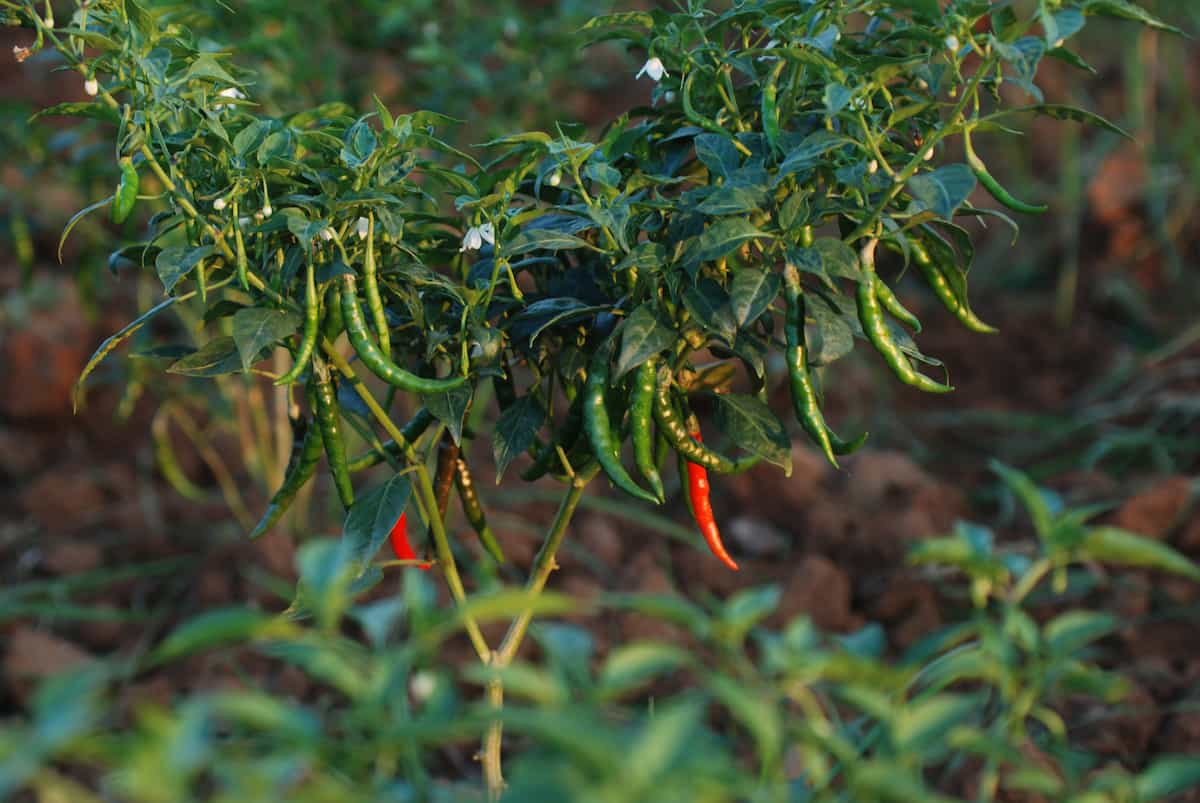Chilli farming is an important agricultural activity in many parts of the world, including India. Chilli cultivation requires suitable climatic conditions, good soil fertility, and proper management practices. Chilli farming is a lucrative business that can generate good income for farmers if done properly.

It is a labor-intensive crop that requires regular care and attention to ensure a good yield. With the increasing demand for chilies in the food industry, chili farming has become an attractive option for farmers looking to diversify their crop portfolio and increase their income.
1 Acre Chilli Farming Success Story
Success Story of Mr. Rajesh
One success story of an Indian farmer who succeeded in Chilli farming on 1 acre of land is the story of Mr. Rajesh from the state of Andhra Pradesh. Mr. Rajesh was a small farmer with limited resources but determined to succeed in agriculture. He had been growing traditional crops like paddy and wheat, but the returns were insufficient to support his family. After attending a training program on chili farming conducted by the local agriculture department, he decided to try his hand at chili farming on a small scale.
Mr. Rajesh started with just 1 acre of land and prepared the soil well before sowing the seeds. He chose high-yielding varieties of chili that were resistant to pests and diseases. He also made sure to provide adequate water and nutrients to the plants. He used a drip irrigation system to conserve water and applied organic fertilizers to improve soil fertility. He used biopesticides to control pests and diseases, which helped to reduce the cost of chemical pesticides.
During the initial months, Mr. Rajesh faced some challenges with weed control but overcame them using manual labor and hoeing. He also took the help of his family members and hired some laborers to take care of the plants. He regularly monitored the growth of the plants and ensured that they were healthy. After about 90 days, the chili plants started to bear fruits, and Mr. Rajesh was amazed at the yield he got.
He harvested the chilies at the right time and carefully packed them in sacks for transportation. He sold the chilies in the local market at a price of Rs.50 per kg, which was a good price considering the quality of the produce. This was a huge success for Mr. Rajesh as he could earn a good income from just 1 acre of land. He reinvested some of the profits back into the farm and used the money to support his family’s needs. He continued growing chilies and tried his hand at other crops like tomatoes and brinjals.
Care and Management Practices Followed by Mr. Rajesh
Mr. Rajesh started by selecting a suitable site for his chili farm, which had good soil fertility, drainage, and adequate sunlight. He then prepared the land by plowing, harrowing, and leveling the field. He added organic matter like cow manure and vermicompost to improve soil fertility. Mr. Rajesh chose high-quality chili seeds from a reliable source. He selected high-yielding varieties resistant to pests and diseases to ensure a good harvest.
In case you missed it: 1 Acre Black Gram Cultivation Project Report in India: Production Cost and profit

Mr. Rajesh planted the chili seeds at the right depth and spacing to ensure optimal growth and development. He used a dibber to create small holes in the soil and planted the seeds at a depth of about 1-2 cm. He also ensured adequate spacing between the plants to avoid overcrowding. Mr. Rajesh used a drip irrigation system to provide adequate water to the plants. He ensured the plants received the right amount of water at the right time to avoid under or overwatering.
He also monitored the soil moisture levels regularly to ensure the plants were not stressed due to lack of water. Mr. Rajesh used organic fertilizers to provide essential nutrients to the chili plants. He used a combination of cow manure, vermicompost, and other organic materials to improve soil fertility. He also applied fertilizers promptly to ensure the plants received the required nutrients at the right time.
Mr. Rajesh used organic and natural methods to control pests and diseases. He used biopesticides to control pests and diseases, which helped reduce the cost of chemical pesticides. He monitored the plants regularly for any signs of pests or diseases and took appropriate action to control them. Mr. Rajesh ensured that the farm was free of weeds through regular weeding. He used manual weeding and also used the help of herbicides to control weeds.
Financial Aspects of Mr. Rajesh’s Chilli Farm
Mr. Rajesh spent Rs. 10,000 on preparing the land for chili cultivation. This included plowing, harrowing, and leveling the field to create a suitable bed for planting. It also included the cost of hiring labor and renting equipment. Mr. Rajesh spent Rs. 5,000 on purchasing high-quality chili seeds from a reliable source. He chose high-yielding varieties resistant to pests and diseases to ensure a good harvest.
Mr. Rajesh spent Rs. 8,000 on organic fertilizers to provide essential nutrients to the chili plants. He used a combination of cow manure, vermicompost, and other organic materials to improve soil fertility. Mr. Rajesh spent Rs. 6,000 on biopesticides to control pests and diseases. He used organic and natural methods to control pests and diseases, which helped reduce the cost of chemical pesticides.
He spent Rs. 12,000 on labor for various activities like planting, weeding, and harvesting. He hired local laborers and used his family members’ help to control labor costs. Mr. Rajesh spent Rs. 5,000 on the drip irrigation system to provide adequate plant water. He used a drip irrigation system to conserve water and ensure the plants received the right amount.
Total expenses: Mr. Rajesh’s total expenses for the chili farm were Rs. 46,000.
On the revenue side, Mr. Rajesh could sell his chilies at Rs. 50 per kg, which was a good price considering the quality of the produce. He harvested about 5,000 kg of chilies from one acre of land, which gave him a total revenue of Rs. 2,50,000. After deducting the total expenses from the total revenue, his net profit for the season was Rs. 2,04,000.
In case you missed it: 1 Acre Cassava Cultivation Project Report: Production Cost and Profit

Conclusion
By choosing the right varieties, providing good soil preparation, using appropriate irrigation and fertilization techniques, and adopting pest and disease control measures, farmers can ensure a good yield and earn a good income. Farmers must record their expenses and income to make informed decisions about their farming operations. With the right mindset and hard work, success in farming is possible.
- Feed Your Flock for Less: Top 10 Tips to Save on Chicken Feed
- Ultimate Guide to Ossabaw Island Hog: Breeding, Raising, Diet, and Care
- Hatching Answers: The Top 10 Reasons Your Chickens Aren’t Laying Eggs
- Eggs and Economics: Breaking Down the Cost of Raising Backyard Chickens
- Defend Your Greens: Proven Methods to Keep Iguanas Out of Your Garden
- Ultimate Guide to Cinnamon Queen Chicken: A Comprehensive Guide for Beginners
- Ultimate Guide to California Tan Chicken: Breeding, Raising, Diet, Egg-Production and Care
- Ultimate Guide to Marsh Daisy Chicken: Breeding, Raising, Diet, and Care
- 10 Types of Chicken Farming Businesses You Can Start for Profits